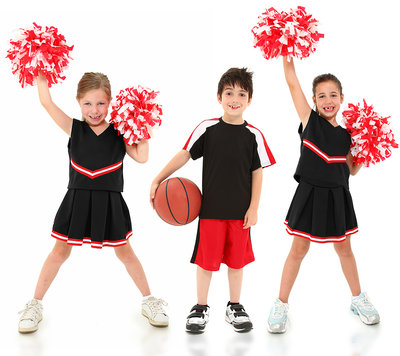Boosting Your Brand with Ads That Score Big
It’s that time of year again. March Madness. No, I’m not talking about college hoops. I’m referring to the high-stakes arena of fashion magazines. Second only to the September issues, March scores the most advertising revenue each year, as design houses drop huge sums for the chance to showcase their spring lineups.
As usual, Vogue is the publication to beat. And at 606 pages, the title is positioned to retain its championship status. I recently grabbed a copy of this weighty tome and noticed that 295 pages went by before I encountered the first real article. But I wasn’t disappointed. I’m a fan of fashion ads, especially because these days most of them are over the top, owing to the fierce competition for consumers’ attention and wallets.
Ultimately, some of them are more effective than others. The good ads sport amazing branding ideas while others foul out with promotions that fail to connect. This just goes to show that celebrity photogs, one-name supermodels and exotic locales don’t guarantee a slam-dunk campaign.
In the ad game, money doesn’t decide the winner. Your publicity machine — be it print ads, paid blogger sponsorships or television spots — can only put points on the board if it reinforces your brand and pre-sells your goods. In advertising, ROI, or return on investment — both the tangible and intangible kind — is the ultimate goal.
Get into the Game
In addition to flipping through glossy consumer mags, I’ve also been studying children’s apparel publications as I help a client determine how best to promote her product launch. The process inspired me to pull together this playbook for creating effective, professional ads.First, placement, content and timing are the MVPs for making the most out of your ad dollars. Which is why before you decide to dive headlong into print advertising, you should take a timeout to consider where to run those spots. When it comes to courting your target consumer, all publications and websites are not created equal. Each offers a slightly different content mix and targets a particular part of the market. Before you spend, consider the stats: how many readers does it have, what are their demographics and how is it distributed and promoted.
Once you’ve picked a media outlet that gets the right eyeballs — whether it’s retailers, moms or kids — get the ad sales rep on your team. Talk with him or her about your strategy and share your budget. From there, they can help you determine the mix of products — print ads, eblasts, banner ads, sponsorships, etc. — to best suit your needs. And remember, advertising works on impressions, or the number of times someone sees your message. Running a single ad is like throwing up a Hail Mary at the buzzer — your chances for success are extremely low.
Play to Your Strengths
Once you know where and when your ads will run, it’s time to design your creative. This is where ads have an advantage over editorial coverage. If an editor writes about your brand, they may drop the ball and fail to mention its key differentiators. With an ad, nothing is left up to chance.But one of the common rookie mistakes I see are ads that lack focus. Before you begin, think of the combined effect your copy and image are shooting for to score. Just like a smart franchise builds a team around a key player, everything in your ad should be built around a single message. A generic image of a cute kid with a bland tagline isn’t going to move goods. Some ads I’ve seen don’t even clearly identify what the company is selling. If you sell socks, make them the focal point of the picture. If hair bows are your thing, the copy should refer to accessories.
First, determine the tone that will best reflect your line and connect with your customer. For instance, are you pulling on heartstrings or appealing to jet set lifestyle? Next, you want your ads to be consistent with the colors, logos and aesthetic of your brand. Just like a fan can spot their favorite team by their jerseys, consumers should come to recognize your branding wherever they see it.
Stand Out from the Competition
While you may know a roster of photographers who are technically proficient, it’s important to pick the one that’s right for you. Whether you’re going for commercial and approachable or moody and edgy, find a photographer whose past work demonstrates that they can produce the correct vibe. Gather images that evoke the feeling you want. No matter where they came from — magazines, brochures, blogs, etc. — these examples will help coach your photog into producing shots that will work for your campaign.Next, make sure the copy in your ad is informative. A tagline that reads “Cute clothes for cute kids” might sound catchy, but it doesn’t explain why a retailer or consumer should pick your collection over another. Is the collection based on reversible items? Is your company known for solving common parenting problems? Is your product the easiest to use? Are there proprietary features? Come up with a tagline and supporting copy that clues the reader in to your brand message.
Finally, it’s time to tell the viewer what you want them to do: visit you at the show, shop your website or click for a chance to win. Though not all ads require an explicit call to action, it gives a reason for the ad and provides the reader with a sense of urgency.
Ads that follow these simple rules will help ensure your campaigns — and brand — can compete.
About Caletha Crawford
Visit www.calethacrawford.com or e-mail














